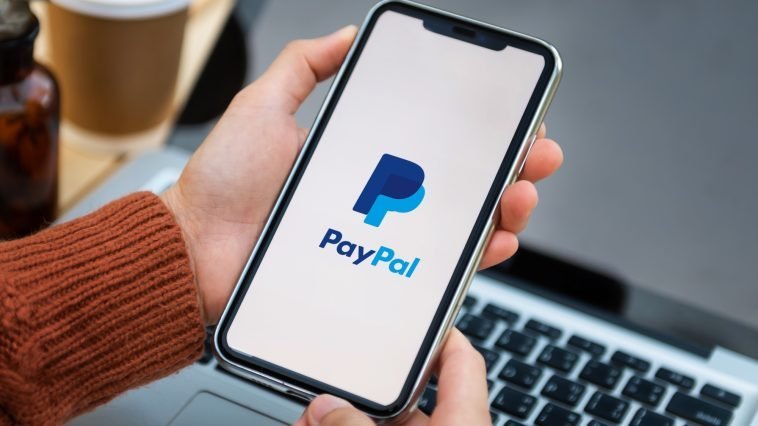Introduction.
Setting up PayPal is often a key step for anyone who wants to make online payments seamlessly or receive funds without much hassle.
Whether you’re an avid online shopper, a freelance worker who gets paid internationally, or someone who just wants an easy way to manage transactions, understanding how to link your bank account to PayPal is crucial.
Why is this important? Well, connecting your bank account to PayPal can make your financial transactions safer and more convenient.
Once linked, you can transfer money between your accounts, pay for things online securely, or withdraw funds from PayPal to your bank whenever you need.
It’s all about giving you flexibility and control over your money. Still, the setup might seem a bit daunting at first, and that’s where I come in to break down every step so you feel confident moving forward.
In this comprehensive guide, I’ll explain everything you need to know to connect your bank account with PayPal efficiently.
I’ll also go over some pros and cons you might want to consider before doing so, and clear up some common questions you might have. Let’s get into the details!
How Do I Link My Bank Account to PayPal?
Let’s get straight into the “how-to” steps:
Step-by-Step Guide
- Log into Your PayPal Account
- Head over to the PayPal website and sign in with your username and password.
- Access Your Wallet
- Click on the “Wallet” option at the top of the screen (on mobile, you may find it in the menu).
- Select ‘Link a Bank Account’
- You’ll see an option that says “Link a bank account.” Click on it.
- Enter Your Bank Details
- Choose your bank from the list, or manually enter your account details like your account number and routing number.
- Confirm Your Bank Account
- PayPal will either verify your account instantly or send two small deposits (usually a few cents each) to your bank. If you receive the small deposits, log back into PayPal to confirm the exact amounts, which will finalize the setup.
Once your account is linked, you can use it to transfer funds to and from PayPal, making your life much easier when it comes to managing your money online.
Pros and Cons of Linking Your Bank Account to PayPal
Before you make a final decision, it’s good to weigh the pros and cons of linking your bank account to PayPal.
Pros
- Easy Transfers: Moving money between your bank account and PayPal becomes super simple. You can top up your PayPal balance or withdraw funds to your bank account without extra fuss.
- Added Convenience: No need to input card details every time you make a purchase. Just choose your bank account at checkout, and PayPal handles the rest.
- Lower Fees: For sending money or transferring funds to friends and family, linking your bank account often comes with lower fees compared to using a credit or debit card.
- Secure Transactions: PayPal adds a layer of security to your online transactions, masking your bank details from sellers and reducing the risk of fraud.
Cons
- Potential for Overdrafts: If you make a payment with insufficient funds in your bank account, it could result in overdraft fees from your bank.
- Longer Transfer Times: Transferring money from PayPal to your bank can take a few days, which isn’t ideal if you need cash quickly.
- Privacy Concerns: While PayPal is generally secure, some people feel uneasy about sharing their bank information with an online platform.
Frequently Asked Questions (FAQ)
1. How long does it take to link my bank account to PayPal?
If your bank is listed for instant verification, it may only take a few minutes. Otherwise, it can take 2–3 business days for PayPal to send the small deposits for verification.
2. Can I link more than one bank account to my PayPal?
Yes, you can. This is particularly useful if you manage multiple accounts and want to have different sources of funds available.
3. Is it safe to link my bank account to PayPal?
Yes, PayPal uses strong encryption and monitoring to keep your information secure. However, always be cautious and monitor your transactions for any unusual activity.
4. Can I remove a linked bank account later?
Absolutely. You can unlink your bank account anytime through your PayPal settings.
5. Are there fees for transferring money between my bank and PayPal?
Typically, moving money from your PayPal balance to your bank account is free unless you choose an instant transfer option, which may incur a small fee.
6. What happens if there’s an error during the linking process?
Double-check that all your bank details are correct. If the issue persists, reach out to PayPal’s support team for assistance.
Conclusion
Linking your bank account to PayPal could make your online transactions smoother and more secure.
Whether you use PayPal frequently for business or casual shopping, having your bank account linked provides a hassle-free way to move your money around. But as with any financial tool, understanding the trade-offs and staying informed is crucial.
Now that you know the ins and outs, are you ready to link your bank account and take advantage of the convenience it offers? Or do you have more questions or concerns before making the jump? Let’s discuss.





GIPHY App Key not set. Please check settings